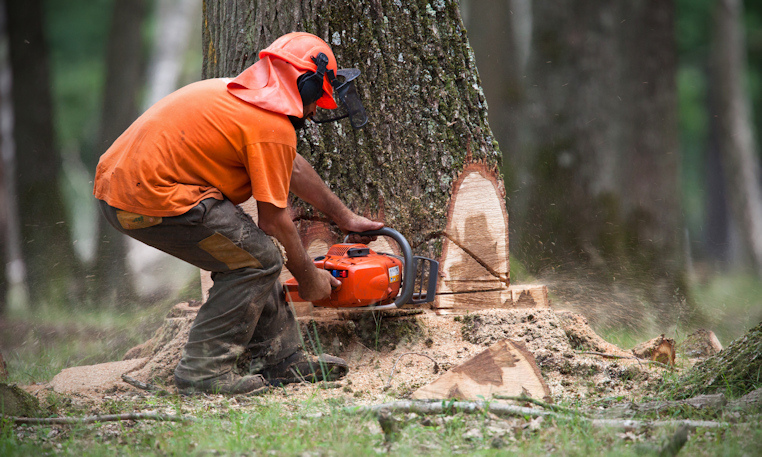6 steps to successful tree felling

The correct techniques must be used when tree felling in West Auckland. It is important to work in a safe environment and to be as effective as possible.
1. Plan ahead
Preparation is essential when it comes to removing trees with a chainsaw. You can make your work session safer by planning the felling, and bringing the right forestry equipment. Ask yourself first if you have any major obstacles in the area, such as overhead power lines, roads, or buildings. If you know that the road will cross a forest area, or that many people will pass by it on a regular basis, then place warning signs.
2. Check the direction of felling
Continue by examining the tree carefully to determine the direction of felling. What are the characteristics of the branches and their growth? Take into account the direction of the wind. You can use a plumbline to determine the natural fall direction of a tree if you are unsure. Clear the area around the tree to the direction you intend to fell it. Clear the area behind the tree about 45 degrees in both directions.
3. Pruning the trunk
Once you’ve cleared the area, place your warning signs. Decide the direction in which the tree will fall and the path that you will take to retreat. Check that you have the fuel to complete the job. It’s now time to trim the trunk, removing all branches and twigs which could get in the path of the saw when making the cut. To prune safely, use a pull chain (on the underside of the guide bar). Work from the top to the bottom.
4. Choose your cutting technique
The felling cut can be made once the trunk has been cleared of twigs up to the shoulder height. It’s important to keep in mind two things when doing this: the hinge must have the correct dimensions and thickness, and the breaking bar or felling wedge should be inserted prior to the guide bar being pinched by the tree. The technique to use depends on your chainsaw, the size of the tree and the slope. Here we have gathered information on the different methods so you can decide for yourself which one suits your situation.
5. Check for diseases
You should be extremely cautious if you see that the wood is discolored and soft, or if you notice the lower portion of the trunk looking swollen. The wood fibres will be weakened if the tree has rot. If this occurs, fall the tree in its natural direction and use a pulley if you’re unsure. The rot infestation subsides higher in the tree. Therefore, you may want to consider a tree that has an extra-high stump.
6. Select your tool
When it comes to removing the tree, you can choose between a variety of tools. The size of the trees determines what type of forestry tools you will need. The tools for felling trees are not necessary when you have small trees. With a long pole, or even just your hands, you can use enough force to bring down the tree. The felling wedge has a greater force of felling than different types breaking bars. You can also use a winch and rope in extreme situations. This is the most effective and safest way to cut down a tree. Check out the fact box to learn more about the tools.




Leave a Reply